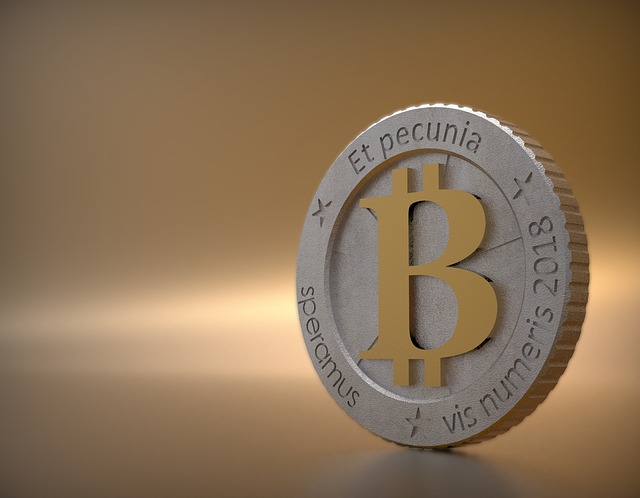
6 Facts to Know About Bitcoin, the World’s First Cryptocurrency
The flagship cryptocurrency, Bitcoin, has gained immense traction over the years and has become the largest crypto in terms of market cap. Launched in January 2009, it celebrated its 15th anniversary earlier this month.
Meanwhile, Bitcoin stands as the leading force in the field of cryptocurrencies. From its humble beginnings to becoming a global sensation, BTC’s journey is full of intriguing milestones and revelations.
So let’s take a closer look at Bitcoin and six remarkable facts that have shaped its evolution and left an indelible mark on the world of digital finance.
Basic Facts About Bitcoin
Bitcoin Creation and Early Developments
The birth of Bitcoin dates back to August 18, 2008, with the registration of bitcoin.org. On October 31, 2008, Satoshi Nakamoto introduced the groundbreaking “Bitcoin: Peer-to-Peer Electronic Cash System” whitepaper on the cryptography mailing list.
The real identity of Nakamoto, who announced the open source Bitcoin software in January 2009, is still hidden. Nakamoto skillfully combined existing academic concepts into the first decentralized, Sybil-proof, Byzantine fault-tolerant digital cash system, a precursor to the blockchain.
Despite initial skepticism from scholars, Nakamoto’s creation mined its inaugural formation block on January 3, 2009. The block included a headline from The Times marking the birth of the revolutionary BTC network.
In particular, a significant turning point in Bitcoin history occurred in 2010, when documented programmer Laszlo Hanyecz made the first commercial transaction by purchasing two pizzas from Papa John’s for the hefty sum of 10,000 BTC. This event is now known as “Bitcoin Pizza Day,” symbolizing the early days when the value of BTC was not widely accepted, leading to seemingly extravagant transactions that later gained historical significance in the cryptocurrency world.
mining process
Bitcoin mining, a critical process in blockchain technology, involves verifying transactions and putting new bitcoins into circulation. Specifically, miners use hardware and software to solve cryptographic puzzles; The first successful miner wins the Bitcoin reward.
This incentive also ensures the legitimacy of transactions by verifying them and prevents problems such as double spending. Essentially, miners act as controllers who maintain the integrity of the Bitcoin network.
Mining introduces new cryptocurrencies beyond transaction verification, and although the flagship crypto network could exist without miners, their participation is vital. But by 2140, when BTC is no longer rewarded, miners will rely on transaction fees to maintain the integrity of the network.
Total Number of Transactions Made to Date
In the complex world of Bitcoin, transactions act as digital messages indicating the transfer of BTCs between users. These transactions are subject to cryptographic signatures for verification and are broadcast to the entire BTC network.
Meanwhile, the transparency of these transactions is maintained on the blockchain, a public digital ledger. The transaction history of each BTC extends back to its origin or point of ‘mining’.
According to YCharts, BTC has witnessed a staggering 956 million transactions as of January 23 since its inception in 2009. With an average of 368,462 transactions per day, BTC’s trading volume reflects its growing importance and utility across various industries.
Limited BTC Supply
Bitcoin, which has a limited supply of 21 million, becomes scarce over time, increasing demand and price. Satoshi Nakamoto, the creator of crypto, introduced this limit to create scarcity, a key feature of cryptocurrency.
Meanwhile, it takes approximately 10 minutes for a new BTC to enter circulation, in parallel with the creation of a new block in the Bitcoin blockchain. In particular, the number of BTC produced per block decreases approximately every four years, or by 50% after 210,000 blocks. This controlled issuance, known as halving, contributes to Bitcoin’s deflationary nature, making it an intriguing asset in the world of digital finance.
Halving Concept Explained
An important process called Bitcoin halving plays a very important role in the Bitcoin world. This event, which takes place approximately every four years, involves halving a block mining reward. Meanwhile, the reward, currently 6.25 BTC, will soon drop to 3,125 BTC at the halving event, which is expected to take place in April 2024.
The Bitcoin halving continues until approximately 2140, when the maximum limit of 21 million coins is reached. At this point miners will be rewarded with transaction fees. This process, in particular, keeps miners motivated.
With three halvings already occurring (November 2012, July 2016, and May 11, 2020), this event is notable as it gradually approaches the finite supply target by reducing the rate of new Bitcoin production.
Spot Bitcoin ETFs
Spot Bitcoin ETFs have been one of the hottest topics since 2023, sparking optimism among global investors and crypto market enthusiasts. Spot BTC ETFs, or spot exchange-traded funds, blend traditional ETF concepts with the intricacies of Bitcoin.
Meanwhile, this financial instrument allows investors to participate in the Bitcoin market without the need to directly purchase BTC tokens. Investors avoid the complexity of crypto exchanges, wallets, and cryptographic keys by investing in spot ETFs through regulated brokerage platforms. This user-friendly approach offers traditional investors a modern way to benefit from Bitcoin market fluctuations while more comfortably navigating the crypto world.
In conclusion:
Bitcoin’s distinguishing feature is its inherent volatility, a feature echoed in the broader cryptocurrency market. While some may see this volatility as a short-term profit opportunity, it underscores the dynamic nature of the crypto space.
Currently, the price of the world’s first cryptocurrency is hovering around $40,000, a sharp contrast to a peak of $69,000 in November 2021 and a modest start of $0.04865 in July 2010. Bitcoin’s journey is a testament to its resilience, attracting both profit-seeking speculators and enthusiasts. demonstrates its revolutionary potential in reshaping the financial landscape.
✓ Share:
A seasoned professional with 3 years of experience in the financial market, Rupam has honed his skills as a meticulous research analyst and insightful journalist. She enjoys exploring the dynamic nuances of the financial landscape. Currently working as a sub-editor at Coingape, Rupam’s expertise goes beyond traditional boundaries. His contributions include breaking news, examining AI-related developments, providing real-time crypto market updates, and providing insightful economic news. Rupam’s journey is marked by his passion to demystify the intricacies of finance and deliver impactful stories that will resonate with diverse audiences.
The content presented may contain the personal opinion of the author and is subject to market conditions. Do your market research before investing in cryptocurrencies. Neither the author nor the publication accepts any liability for your personal financial loss.

#Facts #Bitcoin #Worlds #Cryptocurrency

